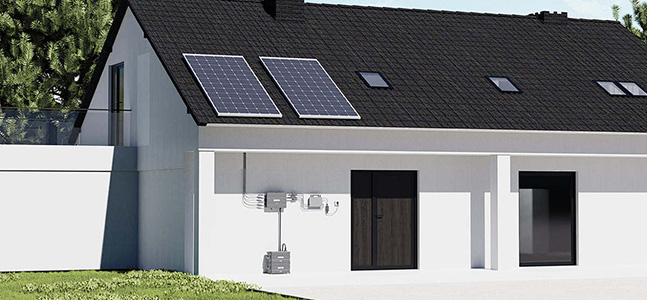Solar Panels in Residential Applications
Solar panels harness the photovoltaic effect to directly convert sunlight into electricity, and in recent years, they have been widely adopted globally. With increasing energy costs and heightened environmental awareness, more households are opting to install solar panel systems. Solar panels harness the photovoltaic effect to directly convert sunlight into electricity, and in recent years, they have been widely adopted globally. With increasing energy costs and heightened environmental awareness, more households are opting to install solar panel systems. As a solar manufacturer that can be customized, we are committed to allowing more customers to experience the benefits of solar energy. This case study on EnterSolar aims to explore the application of solar panels in a typical residential home, evaluate its economic and environmental benefits, and share user experiences.
Case Background
The featured household is located in the suburbs of Los Angeles, California. It is a detached home with an area of approximately 250 square meters and accommodates a family of four. The average monthly electricity consumption is around 800 kilowatt-hours. Due to ample sunshine in the region and high electricity rates, the household decided to install solar panels to reduce utility bills and carbon emissions.




Case Background
The featured household is located in the suburbs of Los Angeles, California. It is a detached home with an area of approximately 250 square meters and accommodates a family of four. The average monthly electricity consumption is around 800 kilowatt-hours. Due to ample sunshine in the region and high electricity rates, the household decided to install solar panels to reduce utility bills and carbon emissions.

Solar Panel Installation and Configuration
- Installation Process: The installation process involved assessing the suitability of the roof, designing the system layout, procuring equipment, installing solar panels, grid connection, and system testing. The entire installation process took approximately two weeks and was carried out by a professional company.
- Solar Panel Selection: The system includes 20 monocrystalline silicon solar panels, each with a power rating of 320 watts, totaling a capacity of 6.4 kilowatts. Monocrystalline silicon panels are chosen for their high efficiency and durability, making them suitable for residential use.
-
System Configuration and Layout: The system operates in a grid-tied mode without battery storage. Solar panels are installed on the south-facing roof slope to maximize sunlight absorption. An efficient MPPT (Maximum Power Point Tracking) inverter is used to enhance overall system efficiency.
Economic Benefit Analysis
- Initial Investment Cost: The total initial investment cost was approximately $15,000, including equipment purchase, installation fees, and net cost after tax incentives.
- Operation and Maintenance Costs: Maintenance costs for the solar panels are minimal, primarily consisting of periodic cleaning and inspections, averaging about $200 annually.
-
Savings on Electricity Bills and Payback Period: Post-installation, monthly electricity bills were reduced from $150 to $30, resulting in annual savings of approximately $1,440. The projected payback period is around 10 years, followed by at least 15 years of virtually free electricity use.
Environmental Benefit Analysis
- Reduction in Carbon Emissions: The solar panel system reduces approximately 5 tons of carbon dioxide emissions annually, equivalent to planting 150 trees.
- Positive Environmental Impact: By reducing reliance on traditional fossil fuels, the system helps mitigate environmental pollution and contributes to improving local air quality.
User Feedback and Experience
- User Experience: The household members are highly satisfied with the performance of the solar panel system, especially appreciating the significant reduction in electricity bills and the environmental benefits. The system operates stably with minimal intervention required.
- Challenges and Solutions: The primary challenge was the initial high investment cost, mitigated through loans and government subsidies. During installation, optimizing roof space posed a challenge, which was addressed through careful layout planning.


